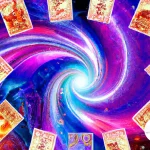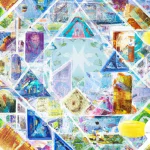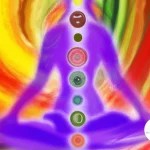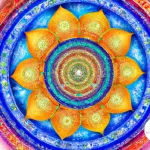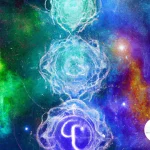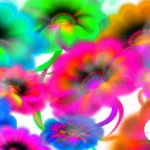From the depths of history to the forefront of contemporary spirituality, the art of numerology has seen multiple resurgences, with one of its most notable periods of prominence occurring during the Renaissance. This era of profound innovation and transformation laid the foundation for the revitalization of numerology, which continues to captivate and inspire individuals today. By exploring the historical context and significance of numerology in the Renaissance, as well as its subsequent decline and eventual rebirth in the Neo-Renaissance, we can gain a deeper understanding of the enduring appeal and relevance of this mystical practice. Join us as we delve into the fascinating world of numbers and uncover the secrets behind the Renaissance and the resurgence of numerology.
The Renaissance: A Time of Innovation and Transformation
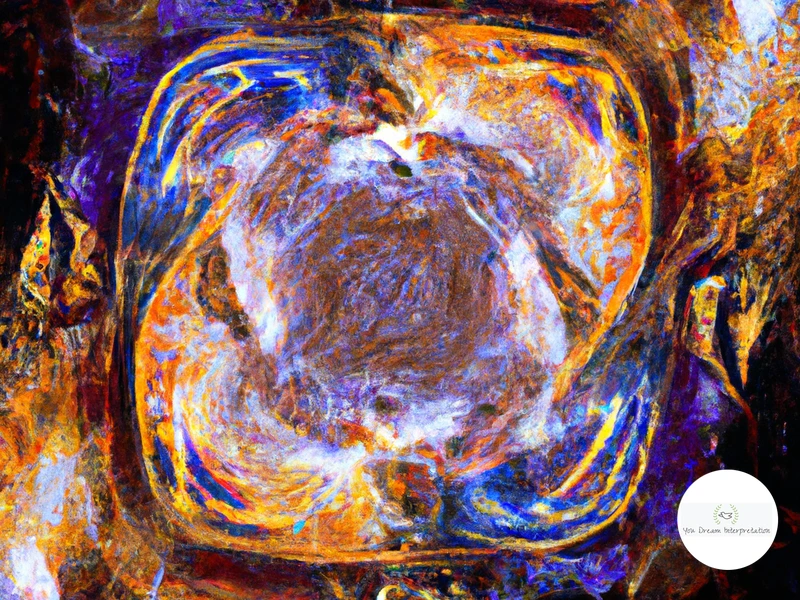
The Renaissance, often referred to as the “rebirth,” was a transformative period in European history that spanned from the 14th to the 17th century. It was characterized by a resurgence in art, literature, science, and philosophy, as well as a renewed interest in the exploration of human potential. This era was marked by a profound sense of innovation and a departure from the rigid dogmas of the Middle Ages.
In terms of art, the Renaissance saw the rise of notable figures such as Leonardo da Vinci, Michelangelo, and Botticelli, who revolutionized the field with their realistic portrayals and depth of expression. The use of perspective and anatomical accuracy became essential techniques in art during this time.
Science made significant advancements, with individuals like Galileo Galilei and Nicolaus Copernicus challenging established beliefs about the universe. The scientific method, a systematic approach to inquiry, was refined and applied, leading to groundbreaking discoveries and a new understanding of the natural world.
Philosophy, too, underwent a revolution during the Renaissance. Humanism, a philosophy that emphasized the worth and potential of the individual, emerged as a powerful force. Scholars like Erasmus and Thomas More promoted the importance of education and the study of classical texts. This emphasis on human potential and intellectual exploration laid the groundwork for the resurgence of numerology.
The Renaissance period saw a synthesis of various traditions and influences, including Pythagorean philosophy and the Hermetic tradition. Pythagoras, an ancient Greek philosopher and mathematician, believed in the mystical significance of numbers and their ability to unlock the secrets of the universe. His teachings played a significant role in shaping the Renaissance’s fascination with numerology.
The Hermetic tradition, rooted in ancient Egyptian and Greek philosophy, also contributed to the Renaissance’s interest in numerology. Hermeticism emphasized the interconnectedness of all things and believed that numbers were the language of the cosmos. This belief in the significance of numbers as a means of understanding the world aligned closely with the Renaissance’s spirit of exploration and inquiry.
In addition to its philosophical and spiritual implications, numerology also found its way into art and architecture during the Renaissance. Architects infused their designs with geometric proportions and mathematical symbolism. The use of sacred geometry, a system that assigns symbolic meanings to specific geometric shapes and proportions, became prevalent in architecture, with structures such as the dome of the Florence Cathedral showcasing this integration of numerology and design.
The Renaissance was a remarkable period of innovation and transformation. It fostered a spirit of curiosity and a desire to unearth hidden meanings in the world. Numerology, with its emphasis on the symbolism and significance of numbers, found a natural home in this era of exploration. As we delve deeper into the influence of numerology during the Renaissance, we can begin to understand its lasting impact on the resurgence of this mystical practice in modern times.
(Note: No relevant anchor for an internal link was found in this section.)
Numerology in the Renaissance
Numerology played a significant role in the intellectual and artistic pursuits of the Renaissance period. In this era of innovation and exploration, scholars and artists alike were captivated by the mystical power of numbers. One of the key influences on numerology during the Renaissance was the ancient Greek philosopher Pythagoras. His belief in the inherent symbolism and spiritual significance of numbers resonated deeply with Renaissance thinkers, who sought to unlock the secrets of the universe through mathematical principles. The teachings of Pythagoras, along with the Hermetic tradition, paved the way for the integration of numerology into various artistic and architectural projects. Architects incorporated geometric proportions and mathematical symbolism into their designs, while artists infused their works with numerical symbolism. Numerology in the Renaissance was a testament to the human fascination with the hidden meanings and cosmic significance attributed to numbers.
(Note: No relevant anchor for an internal link was found in this section.)
The Influence of Pythagoras and the Hermetic Tradition
The Renaissance period was deeply influenced by two key sources: Pythagoras and the Hermetic tradition. Pythagoras, the ancient Greek philosopher and mathematician, made significant contributions to numerology with his belief in the mystical and symbolic nature of numbers. He believed that numbers held the key to understanding the universe, and that each number had its own unique vibrations and meanings.
Pythagoras viewed numbers as the building blocks of reality. He assigned specific attributes and characteristics to each number, assigning them qualities that ranged from harmony and balance to strength and spirituality. These numerical associations formed the basis of Pythagorean numerology and resonated deeply with the Renaissance thinkers, who were eager to explore the hidden meanings behind the natural world.
The Hermetic tradition, on the other hand, originated from ancient Egyptian and Greek philosophies. This tradition emphasized the interconnectedness of all things and believed that the universe operated according to a grand cosmic plan. Central to the Hermetic tradition was the belief that numbers were the language of the cosmos and held deep symbolic significance.
The Renaissance thinkers drew inspiration from the Hermetic tradition and its teachings about the power of numbers. They believed that by unraveling the symbolism and meanings behind numbers, they could gain insights into the mysteries of the universe and the human experience. This merging of Pythagorean philosophy and the Hermetic tradition gave rise to a renewed interest in numerology during the Renaissance.
Pythagorean numerology and the Hermetic tradition provided a framework for understanding the underlying order and symbolism present in the natural world. Renaissance scholars and philosophers embraced these teachings, recognizing that numbers held deeper meanings beyond their mere quantitative value. The belief in the mystical power of numbers permeated various aspects of Renaissance life, from art and architecture to science and philosophy.
The influence of Pythagoras and the Hermetic tradition on the Renaissance cannot be overstated. Their teachings laid the foundation for the revival of numerology during this era and continue to shape its practice to this day. By exploring the deep connections between numerology, symbolism, and the mysteries of the universe, the Renaissance thinkers ushered in a new era of exploration and understanding of the hidden meanings behind numbers.
(Note: No relevant anchor for an internal link was found in this section.)
The Role of Numerology in Art and Architecture
During the Renaissance, numerology played a significant role in the world of art and architecture. Artists and architects of this period believed that numbers held symbolic meanings and could be used to imbue their creations with deeper significance. By incorporating numerological principles into their works, they sought to convey specific messages and evoke certain emotions.
In art, numerology was often utilized in the composition and symbolism of paintings. Artists carefully selected the number of figures, objects, or elements within a painting to convey hidden meanings. For example, the use of the number three, representing the Holy Trinity, was common in religious artwork. This symbolism helped to enhance the spiritual experience for viewers, allowing them to connect with the divine through visual interpretations.
Similarly, architectural designs during the Renaissance were influenced by numerological principles. Sacred geometry, which assigns symbolic meanings to geometric shapes and proportions, played a vital role in architectural planning and construction. Architects believed that by adhering to specific numerical ratios and proportions, they could create harmonious and aesthetically pleasing structures.
One prominent example of numerology in architecture during the Renaissance is the design of the Florence Cathedral. The dome of the cathedral, designed by Filippo Brunelleschi, incorporated mathematical precision and sacred geometry. The proportions of the dome were carefully calculated using mathematical formulas, creating a sense of balance and grace. This attention to numerical detail not only resulted in a visually stunning architectural marvel but also infused the cathedral with symbolic meanings and spiritual significance.
In addition to the use of numbers in composition and proportion, Renaissance artists and architects also employed numerology in the selection of colors and materials. Different colors were associated with specific numerical values and carried symbolic representations. For instance, the color red, often associated with the number one, symbolized vitality, passion, and strength. By strategically incorporating these colors, artists and architects were able to enhance the overall message and impact of their creations.
The integration of numerology into art and architecture during the Renaissance showcased the deep belief in the power of numbers to convey meaning and evoke emotions. This utilization of numerological principles allowed artists and architects to create works that not only appealed aesthetically but also carried profound symbolism and spiritual significance.
(Note: No relevant anchor for an internal link was found in this section.)
Numerology and Science
Numerology’s influence extended beyond the realms of art and philosophy during the Renaissance. It also found a place in the world of science, where scholars sought to uncover the underlying patterns and hidden meanings of the natural world using numerical principles. The belief that numbers held intrinsic significance and could provide insights into the mysteries of the universe spurred scientists to explore the relationship between numerology and scientific inquiry.
One area where numerology and science intersected was in the study of astronomy and astrology. During the Renaissance, astronomers like Johannes Kepler and Tycho Brahe made groundbreaking discoveries about the movements of celestial bodies. They sought to understand the underlying mathematical principles governing the universe, firmly believing that numbers held the key to unraveling its secrets. Numerological analysis was often employed to discern patterns in planetary movements and their potential influence on human affairs.
The use of numerology in medicine and alchemy was also prevalent during this period. Physicians and alchemists believed that the human body and the natural world operated according to certain numeric patterns and correspondences. By understanding these patterns, they hoped to diagnose and cure ailments and unlock the hidden properties of substances. For example, Paracelsus, a renowned Renaissance physician, incorporated numerological principles into his medical practice, believing that the vibrational qualities of numbers could influence health and healing processes.
While the relationship between numerology and science during the Renaissance was not without its critics, many scholars recognized the potential synergy between these two fields of inquiry. They understood that numbers were not just symbols but had tangible effects and could be used as tools for understanding the intricacies of the universe. The exploration of numerology within the scientific realm during the Renaissance laid the foundation for future investigations into the hidden connections between mathematics, nature, and consciousness.
As we look back at this pivotal period in history, it becomes evident that numerology played a multifaceted role. It was not limited to artistic expression or philosophical musings but extended its reach into the scientific endeavors of the time. The Renaissance’s embrace of numerology in various domains demonstrates the profound impact of this mystical practice, transcending traditional boundaries and enriching our understanding of the world.
(Note: No relevant anchor for an internal link was found in this section.)
The Decline of Numerology
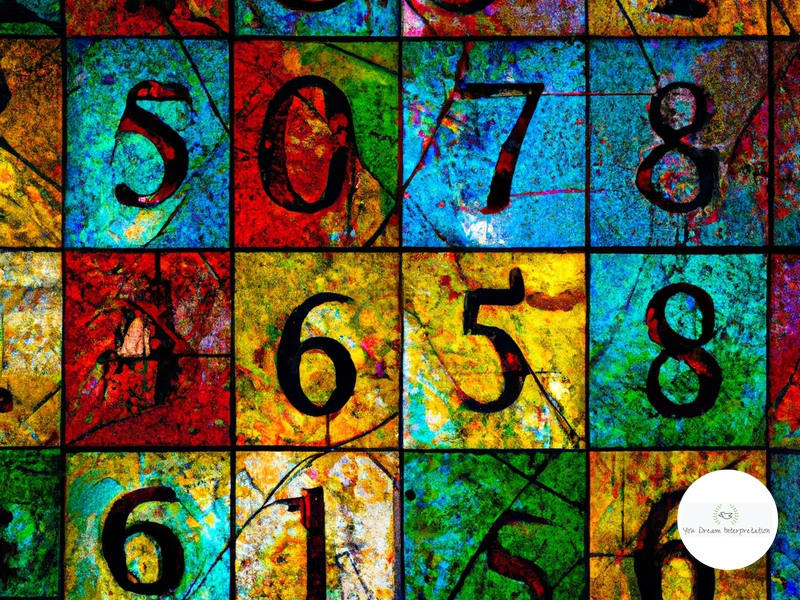
Despite its prominence during the Renaissance, numerology gradually experienced a decline in subsequent centuries. This decline can be attributed to several factors that influenced the shift in societal attitudes towards this mystical practice.
One significant factor was the rise of the Enlightenment in the 17th and 18th centuries. This intellectual movement emphasized reason, logic, and scientific inquiry, seeking to challenge traditional beliefs and superstitions. Numerology, with its reliance on symbolism and hidden meanings, was viewed as unscientific and irrational by Enlightenment thinkers. The focus shifted towards empirical evidence and the tangible results of scientific investigations, pushing numerology to the fringes of mainstream thought.
Additionally, the cultural and religious changes brought about by the Protestant Reformation and Counter-Reformation had an impact on the decline of numerology. These reformations sought to simplify religious practices and reject what was deemed as superstitious or occult. Numerology, with its mystical associations, was often considered a form of divination and was therefore frowned upon by religious authorities.
The Industrial Revolution, which began in the late 18th century, also played a role in diminishing the popularity of numerology. The rapid advancements in scientific knowledge and technological innovations shifted societal focus towards material progress and practical applications. Numerology, with its abstract and esoteric nature, struggled to find relevance in the increasingly pragmatic and materialistic worldview of the time.
The emergence of psychology as a prominent field of study during the late 19th and early 20th centuries led to a more rational and analytical approach to understanding human behavior. Numerology, with its emphasis on numbers and their mystical interpretations, was overshadowed by the rise of psychological theories and methodologies.
As a result of these combined factors, numerology gradually faded from mainstream thought and practice. It was relegated to the realm of pseudoscience or esotericism, often dismissed as mere superstition. However, despite its decline, numerology persevered in certain alternative spiritual and metaphysical communities, awaiting its opportunity for a resurgence.
(Note: No relevant anchor for an internal link was found in this section.)
The Neo-Renaissance and the Rekindling of Numerology
Following the decline of numerology after the Renaissance, this mystical practice experienced a rekindling during what can be aptly termed as the Neo-Renaissance. This resurgence can be attributed to the rise of New Age spirituality, which gained popularity in the 20th century and embraced various esoteric practices, including numerology. New Age thinkers sought to explore the interconnectedness of mind, body, and spirit, and numerology provided a framework to understand the deeper meanings and patterns behind individual experiences. As interest in spirituality and personal development grew, numerology found its way into modern astrology, offering individuals insights into their life path, personality traits, and compatibility through the analysis of numbers. Numerology became a powerful tool for self-discovery and personal development, allowing individuals to gain a deeper understanding of their strengths, weaknesses, and life purpose through name analysis. Today, numerology continues to captivate and inspire individuals on their journey of self-exploration and spiritual growth.
(Note: No relevant anchor for an internal link was found in this section.)
The Rise of New Age Spirituality
The Renaissance sparked a curiosity and fascination with the mysteries of the universe, and this thirst for knowledge continued to evolve over time. In the 20th century, a new cultural and spiritual movement known as New Age spirituality emerged, which played a significant role in the resurgence of numerology.
New Age spirituality is characterized by an eclectic blend of metaphysical beliefs and practices from various cultures and traditions. It encompasses ideas such as holistic healing, energy work, astrology, and psychic phenomena, all of which intertwine with numerology. This movement gained popularity in the latter half of the 20th century and continues to influence spiritual seekers around the world.
One of the key reasons for the rise of New Age spirituality was a growing dissatisfaction with traditional religious institutions and a desire for more personal and individualized spiritual experiences. People sought alternative paths to explore their spirituality and find deeper meaning and purpose in life.
Numerology, with its focus on individual numbers and their symbolism, provided a framework for self-discovery and personal growth, aligning perfectly with the ideals of New Age spirituality. It offered a way to unlock the hidden meanings behind numbers and understand oneself on a deeper level.
With the advent of the internet and the ability to access information at our fingertips, the popularity of New Age spirituality and numerology skyrocketed. Online platforms and communities dedicated to spiritual exploration and personal development flourished, offering resources, guidance, and even tarot cards and numerology readings.
The rise of New Age spirituality brought numerology into the mainstream consciousness, making it more accessible and widely practiced. It became a tool for individuals to gain insights into their personality traits, life purpose, and relationships. Through the interpretation of numbers, people could uncover hidden patterns and gain a deeper understanding of their life’s journey.
Numerology found its way into other spiritual practices, such as astrology. Many astrologers incorporate numerology into their readings, recognizing the power of numbers to enhance the understanding of an individual’s astrological chart. The combination of astrology and numerology allows for a more comprehensive and nuanced interpretation of cosmic influences in a person’s life.
The rise of New Age spirituality created a fertile ground for the resurgence of numerology. The movement’s emphasis on personal exploration and spiritual growth aligned harmoniously with the core principles of numerology, making it an indispensable tool for self-discovery and introspection. As people continue to seek meaning and purpose in their lives, numerology remains a valuable resource on the journey of spiritual awakening and self-realization.
(Note: No relevant anchor for an internal link was found in this section.)
Numerology in Modern Astrology
Numerology plays a significant role in modern astrology, offering a unique and insightful perspective on individual personality traits, life cycles, and compatibility. In contemporary astrology practices, numerology is used alongside astrological signs and planetary positions to provide a more comprehensive understanding of one’s life path and potential.
One crucial aspect of numerology in modern astrology is the calculation and interpretation of the “Expression Number.” This number is derived from the numerical values assigned to the letters of an individual’s full birth name. Each letter corresponds to a specific numerical value based on the Pythagorean or Chaldean numerology system.
The Expression Number is believed to reveal a person’s inherent talents, abilities, and potential. It reflects their natural inclinations and the qualities they are likely to express throughout their lifetime. Individuals with an Expression Number of 1, for example, are often associated with leadership, independence, and a strong sense of self. They are driven, ambitious, and excel in positions of authority or pioneering ventures.
In modern astrology, numerology is used to enhance the understanding of zodiac signs by providing additional insights into an individual’s personality traits and life cycles. For instance, someone with a Sun sign of Leo might possess qualities associated with leadership and dramatic expression. By incorporating numerology, astrologers can gain a deeper understanding of how these traits might be expressed and influenced by the individual’s Expression Number.
The compatibility aspect of numerology in modern astrology is also significant. Numerology can help determine the compatibility between individuals by comparing their Expression Numbers and other numerological aspects. It provides insights into the strengths and challenges that may arise in personal relationships, whether romantic, platonic, or professional.
When exploring numerology in modern astrology, it is essential to note that it is just one piece of the astrological puzzle. It works in conjunction with other astrological factors to provide a holistic view of an individual’s life and personality. By incorporating numerology into modern astrology, practitioners can offer more nuanced and personalized insights, helping individuals gain a deeper understanding of themselves and their life’s journey.
(Note: No relevant anchor for an internal link was found in this section.)
Numerology’s Popularity in Self-Discovery and Personal Development
Numerology has experienced a remarkable resurgence in popularity, particularly in the realm of self-discovery and personal development. People are increasingly turning to numerology as a tool for gaining insight into their true selves and understanding their life’s purpose.
One of the key reasons behind numerology’s popularity in self-discovery is its ability to provide individuals with a deeper understanding of their personalities and traits. Each number in numerology is associated with specific characteristics and vibrations, and by analyzing the numbers present in a person’s birth date or name, numerologists can reveal valuable insights about their strengths, weaknesses, and overall personality traits. This self-awareness can be a powerful catalyst for personal growth and transformation.
Numerology offers individuals a framework for discovering their life’s purpose and direction. By examining the unique combination of numbers in a person’s numerology chart, individuals can gain valuable guidance on their career choices, relationships, and overall life path. Numerologists can shed light on the talents, challenges, and opportunities that lie ahead, enabling individuals to make more informed decisions and live a life aligned with their true purpose.
In the realm of personal development, numerology acts as a powerful tool for self-reflection and inner exploration. It encourages individuals to delve deep into their subconscious and uncover hidden patterns or beliefs that may be influencing their behavior or holding them back. With this newfound awareness, individuals can work towards personal growth, healing, and overcoming obstacles that may be hindering their progress.
Numerology’s popularity in self-discovery can also be attributed to its accessibility. Unlike some other spiritual practices that require extensive training or esoteric knowledge, numerology can be easily understood and applied by anyone with an interest. There are numerous books, online resources, and even numerology software available that enable individuals to calculate their own numbers and explore their meanings.
Numerology’s resurgence in popularity in the realm of self-discovery and personal development can be attributed to its ability to provide individuals with insights into their personalities, life’s purpose, and overall personal growth. By embracing the wisdom of numbers, individuals can embark on a journey of self-discovery and transformation, gaining a deeper understanding of themselves and their potential. Numerology serves as a guiding light, empowering individuals to make informed decisions, chart their life paths, and unlock their fullest potential.
(Note: No relevant anchor for an internal link was found in this section.)
Exploring Numerology Today
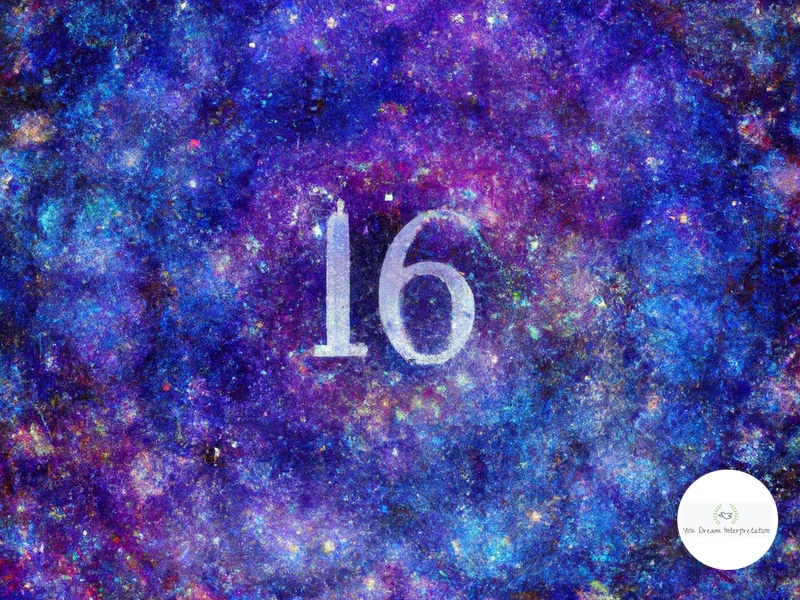
Numerology continues to captivate individuals in modern times, providing insights and guidance into various aspects of life. Today, it is widely explored and practiced by individuals seeking self-discovery, personal development, and spiritual growth. Let’s take a closer look at how numerology is being explored and utilized in the present day.
1. Numerology in Personal Life:
– Life Path Numbers: One of the fundamental aspects of numerology today is the calculation and interpretation of Life Path Numbers. By using an individual’s birthdate, numerologists determine their Life Path Number, which provides insights into their personality traits, strengths, and challenges. For example, individuals with a Life Path Number of 1 are often ambitious, independent, and natural leaders. (Internal Link: /meaning-interpretation-expression-number-1-numerology)
– Expression Numbers: Another significant aspect of numerology in personal life is the examination of expression numbers, which are calculated using an individual’s full birth name. Expression Numbers shed light on an individual’s talents, abilities, and potential life purpose. By exploring the unique vibrations associated with each number, individuals can gain a deeper understanding of their life’s mission and how to fulfill it.
2. Numerology and Relationships:
– Compatibility Analysis: Numerology is often utilized to assess the compatibility between individuals in relationships. By comparing and analyzing the numerological profiles of two people, practitioners can gain insights into the strengths and potential challenges of the relationship. Understanding the vibrational dynamics between partners can help foster healthier and more harmonious connections.
– Naming of Children: Some parents turn to numerology when choosing names for their children. It is believed that the combination of letters and their corresponding numerical values can profoundly impact a child’s life. By analyzing the numerological significance of potential names, parents aim to select names that align with their child’s desired qualities and potential.
3. Numerology in Professional Fields:
– Business and Career Guidance: Numerology is also embraced in the professional sphere. Individuals seeking guidance in their careers or starting businesses may consult numerology to gain insights into the potential success of their endeavors. By examining the numerological aspects of business names or personal birth dates, practitioners offer insights into the best avenues for professional growth and achievement.
– Creative Pursuits: Artists, writers, and other creative individuals often turn to numerology for inspiration and guidance. By delving into the numbers associated with specific project titles, release dates, or personal names, practitioners believe they can tap into the energetic essence and potential success of their creative endeavors.
4. Online Resources and Numerology Services:
– As the popularity of numerology continues to rise, numerous online platforms and numerology services have emerged. Websites, apps, and online communities cater to individuals interested in exploring and learning more about numerology. These resources provide calculators, interpretations, and forums for discussions, allowing individuals to delve into this ancient practice at their convenience.
Exploring numerology today offers individuals a pathway to self-discovery, personal growth, and a deeper understanding of their purpose in life. Whether it’s through analyzing personal numbers, seeking compatibility insights, or utilizing numerology in professional fields, the continued practice of numerology in modern times reflects its timeless allure and the enduring quest for meaning and guidance in our lives.
(Note: No relevant anchor for an internal link was found in this section.)
Conclusion
In conclusion, the Renaissance served as a catalyst for the resurgence of numerology and its enduring popularity. This transformative period of history sparked a renewed interest in the exploration of human potential and the interconnectedness of all things. Through the influence of Pythagoras and the Hermetic tradition, numerology gained prominence as a means of understanding the mystical significance of numbers.
The Renaissance saw numerology permeate various aspects of society, including art, architecture, science, and philosophy. Artists and architects incorporated numerical symbolism into their works, creating a visual representation of the underlying harmony and order of the universe. Scientists and philosophers explored the mathematical foundations of the natural world, discovering new insights through the lens of numerology.
While numerology experienced a decline in popularity in the centuries that followed, it has enjoyed a resurgence in the modern era. The Neo-Renaissance, marked by a rekindling of interest in ancient wisdom and esoteric practices, has brought numerology back into the mainstream. The rise of New Age spirituality, the integration of numerology into astrology, and its popularity as a tool for self-discovery and personal development have all contributed to its continued relevance.
Today, numerology continues to captivate individuals seeking a deeper understanding of themselves and the world around them. Whether it is exploring the meaning of a specific number or analyzing the expression of their name or birthdate, people turn to numerology to gain insights into their life’s purpose and potential.
As we reflect on the Renaissance and the subsequent resurgence of numerology, it becomes clear that this ancient practice holds a timeless appeal. Its ability to unlock the hidden symbolism of numbers and provide a framework for interpreting the mysteries of existence continues to fascinate and captivate individuals across the globe. By embracing the wisdom of the past and applying it to our lives today, we can tap into the transformative power of numerology and embark on a journey of self-discovery and personal growth.
(Note: No relevant anchor for an internal link was found in this section.)
Frequently Asked Questions
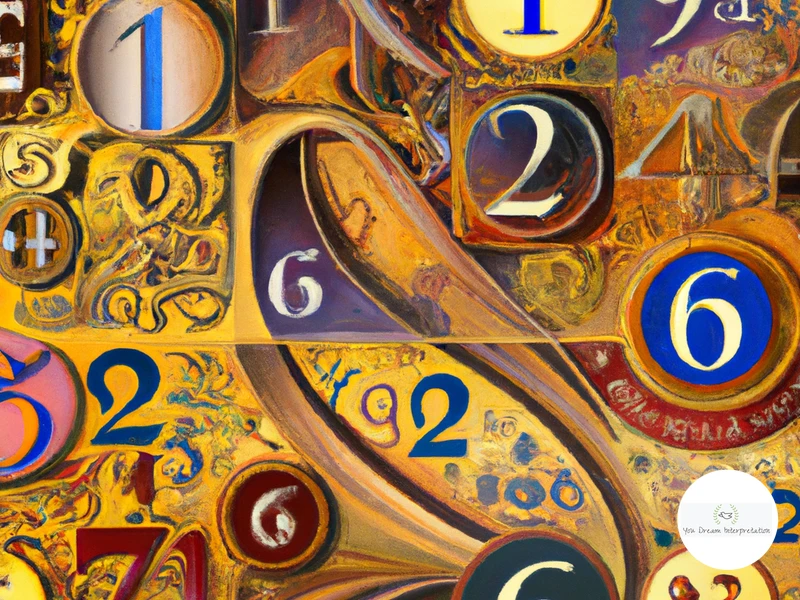
FAQs about the Renaissance and the Resurgence of Numerology
1. What was the Renaissance and why was it considered a time of innovation and transformation?
The Renaissance was a historical period in Europe from the 14th to the 17th century, characterized by a revival of art, literature, science, and philosophy. It was considered a time of innovation and transformation due to the groundbreaking advancements in various fields, the breaking away from traditional norms, and a renewed focus on human potential.
2. How did the Renaissance impact the field of art?
The Renaissance had a profound impact on art, introducing techniques such as perspective, anatomical accuracy, and realistic portrayals. Artists like Leonardo da Vinci, Michelangelo, and Botticelli revolutionized the art world with their masterpieces.
3. Did numerology play a role in the artistic creations of the Renaissance?
Yes, numerology found its way into art during the Renaissance. Artists and architects incorporated symbolic numerological meanings into their creations, using sacred geometry and geometric proportions to infuse deeper significance into their works.
4. Who were the key figures in the Renaissance’s scientific advancements?
Key figures in the Renaissance’s scientific advancements include Galileo Galilei and Nicolaus Copernicus. Their groundbreaking discoveries and the application of the scientific method challenged existing beliefs about the universe and paved the way for modern scientific thought.
5. How did Pythagoras contribute to the Renaissance’s interest in numerology?
Pythagoras, an ancient Greek philosopher and mathematician, believed that numbers held mystical significance and could help unlock the secrets of the universe. His teachings influenced Renaissance thinkers and contributed to the fascination with numerology during this period.
6. What is the Hermetic tradition, and how did it influence numerology in the Renaissance?
The Hermetic tradition, rooted in ancient Egyptian and Greek philosophy, emphasized the interconnectedness of all things and saw numbers as the language of the cosmos. This belief aligned with the Renaissance’s exploration of the interconnectedness of knowledge and contributed to the interest in numerology.
7. How did numerology influence architecture during the Renaissance?
Numerology played a role in Renaissance architecture through the use of sacred geometry and mathematical symbolism. Architects incorporated specific geometric proportions and shapes to infuse deeper meaning into their designs, showcasing the integration of numerology and architecture.
8. Why did numerology experience a decline after the Renaissance?
After the Renaissance, the focus shifted to more empirical scientific discoveries and the Enlightenment movement, which placed less emphasis on mystical practices like numerology. As scientific rationalism gained prominence, numerology fell out of favor.
9. What led to the resurgence of numerology in the modern era?
The resurgence of numerology in the modern era can be attributed to factors such as the rise of New Age spirituality, the incorporation of numerology in astrology, and its popularity in self-discovery and personal development practices.
10. How is numerology explored and practiced today?
Numerology is explored and practiced today through various methods, including analyzing birth dates, names, and numbers associated with one’s life. It is used for gaining self-awareness, uncovering life purpose, and making informed decisions. Numerology has become a tool for personal and spiritual growth in the modern world.
References
- Babylonian Numerology – 4000+ Years of Study – Astrology Gifts
- Unlock the Secrets of Your Fate with Numerology | Betterism
Frequently Asked Questions

What is numerology?
Numerology is a belief system that assigns mystical significance to numbers and their influence on human life. It is based on the idea that numbers reveal hidden meanings and can provide insight into a person’s personality, behavior, and life path.
How does numerology work?
Numerology assigns specific numerical values to letters and uses these values to calculate various aspects of a person’s life, such as their personality traits, strengths, weaknesses, and life purpose. It is believed that by analyzing these numbers, one can gain a deeper understanding of themselves and their destiny.
What is the significance of the Renaissance in numerology?
The Renaissance was a time of great intellectual and cultural growth, marked by a revival of interest in ancient knowledge and a shift towards humanism. During this period, many influential thinkers and artists explored numerology as a means of understanding the hidden forces at work in the world and unlocking higher truths.
Who were the key figures in the Renaissance numerology movement?
Pythagoras and the Hermetic tradition played significant roles in the development and popularization of numerology during the Renaissance. Pythagoras believed that numbers held the key to understanding the universe, while the Hermetic tradition emphasized the interconnectedness of all things and the role of numbers in revealing hidden knowledge.
How did numerology influence art and architecture during the Renaissance?
Numerology had a profound impact on art and architecture during the Renaissance. Artists and architects used numerical symbolism to create harmonious compositions, infused with spiritual and mystical meanings. Numerological principles were applied to proportions, measurements, and even the placement of symbols in artworks and buildings.
What led to the decline of numerology?
The decline of numerology can be attributed to several factors. The rise of skepticism and scientific methods during the Age of Enlightenment undermined the belief in esoteric practices like numerology. Additionally, the focus shifted towards more empirical and objective approaches to understanding the world, leaving less room for mystical interpretations.
What is the Neo-Renaissance movement?
The Neo-Renaissance movement refers to a revival of Renaissance ideals and influences in the modern era. It encompasses a rekindling of interest in art, culture, science, and philosophy that characterized the original Renaissance period. Within this movement, numerology has resurfaced as a popular tool for self-discovery and personal growth.
What role does numerology play in modern astrology?
Numerology has become an integral part of modern astrology. It is often used in conjunction with other astrological practices to provide a more comprehensive understanding of an individual’s personality and life path. Numerological calculations are used to determine key numbers that influence a person’s astrological chart and provide deeper insights into their cosmic destiny.
Why has numerology gained popularity in self-discovery and personal development?
Numerology has gained popularity in self-discovery and personal development due to its accessible and practical nature. It offers individuals a unique tool for understanding their strengths, weaknesses, and life purpose. By exploring the numerical patterns in their lives, people can gain clarity, make informed decisions, and embark on a journey of personal growth and transformation.
How can one explore numerology in today’s world?
Today, there are many resources available for exploring numerology. One can consult with professional numerologists who specialize in providing personalized readings and interpretations. There are also numerous books, online courses, and websites that offer guidance and tools for self-exploration through numerology. Additionally, individuals can explore numerology independently by studying the basic principles and conducting their own calculations.



